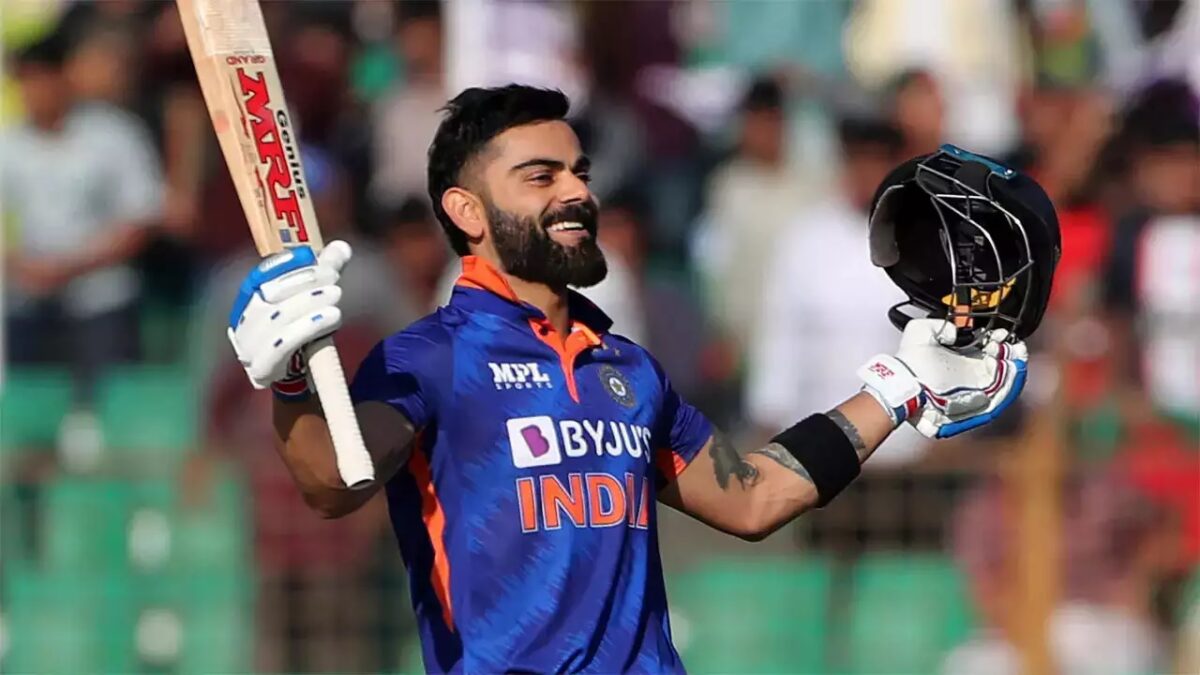The slog over in cricket is a pivotal phase of the game that often determines the outcome of a match. This article aims to provide an insightful understanding of this period, its significance, tactics employed, and more.
By going beyond into these aspects, readers will gain a comprehensive overview of the slog over and its impact on the game as a whole.
- The slog over is the final phase of an innings in cricket, typically consisting of the last 5 to 10 overs.
- Its main purpose is to maximize the team's score by hitting boundaries and scoring quick runs.
- Batsmen need to approach the slog over differently compared to earlier stages of the innings, taking more risks and playing aggressive shots.
- The slog over determines the outcome of a match and adds excitement and entertainment to the game, with spectators enjoying the aggressive batting and big hits.
The Significance of the Slog Over in Cricket
The significance of the slog over in cricket lies in its potential to drastically alter the outcome of a match through aggressive and high-risk batting strategies.
The slog over refers to the final few overs of an innings, typically between 16th and 20th over in Twenty20 matches, where batsmen aim to maximize their team’s score by hitting boundaries and attempting big shots.
This phase of the game is crucial as it can determine whether teams reach competitive totals or chase down challenging targets.
Slog over tactics involve taking calculated risks, with batsmen looking to clear the boundary ropes as frequently as possible.
In this high-pressure period, batsmen often employ power-hitting techniques such as using a strong bottom hand grip, generating maximum bat speed, and targeting specific areas on the field where they can exploit gaps for boundaries.
Game-changing performances during slog overs have become a defining feature of modern-day cricket. Batsmen who excel in this phase not only boost their team’s run-rate but also demoralize opposition bowlers.
These performances require skill, timing, and decision-making under pressure. Additionally, successful execution of slog over tactics demands knowing when to take risks and when to rotate strike intelligently.
Overall, understanding and effectively utilizing slog over strategies can significantly impact a match’s outcome by providing momentum shifts or propelling teams towards victory through substantial late-innings scoring bursts.
Understanding the Slog Over: A Breakdown
A breakdown of the final phase in a cricket match can provide insights into the strategic decisions made by players.
The slog over, also known as the death overs or powerplay, is the last set of overs in an innings where batsmen aim to score as many runs as possible.
This phase is crucial for setting a competitive total or chasing down a target. To understand this phase better, let’s examine some key aspects of slog over batting techniques and common mistakes made by batsmen.
| Batting Techniques | Common Mistakes |
|---|---|
| Aggressive shot selection | Lack of patience |
| Effective use of power hitting | Poor shot execution |
| Quick running between wickets | Inability to rotate strike |
Slog over batting requires aggressive shot selection, such as power hitting and finding gaps in the field. Batsmen must balance risk with reward and avoid getting bogged down by dot balls.
However, common mistakes include impatience leading to poor shot execution and an inability to rotate strike effectively.
In conclusion, understanding the slog over involves mastering various batting techniques while being aware of common mistakes that can hinder a team’s performance.
By analyzing these aspects, teams can develop effective tactics and strategies for success in this crucial phase of a cricket match.
Tactics and Strategies in the Slog Over
Effective tactics and strategies employed in the final phase of an innings involve careful analysis of batting techniques and common mistakes to maximize scoring potential.
During the slog over, which refers to the last few overs of an innings in cricket, batsmen face a challenging task of scoring as many runs as possible within a limited timeframe.
To achieve this objective, they need to employ specific batting techniques that allow them to capitalize on scoring opportunities.
One crucial aspect of successful batting during the slog over is the ability to adapt and adjust one’s technique according to different bowling variations.
Bowlers often employ various tactics such as slower deliveries, yorkers, bouncers, and cutters to deceive or restrict batsmen from scoring freely. Batsmen must be able to read these variations quickly and respond accordingly.
To counter slower deliveries or yorkers, batsmen can use innovative shots like ramps or scoops that aim to loft the ball over infield fielders. This aggressive approach allows them to score boundaries even with well-executed bowling variations.
Furthermore, it is essential for batsmen not to fall into common mistakes during the slog over. Rushing shots without proper timing or losing patience can result in wickets at crucial moments.
Therefore, maintaining composure and selecting appropriate shots based on bowler’s tactics are vital elements for success during this phase.
Key Players and Performances in the Slog Over
Key players who excel in the final phase of an innings demonstrate exceptional adaptability and decision-making skills when facing various bowling variations.
These players possess the ability to analyze the game situation, identify scoring opportunities, and execute their shots effectively.
Player analysis reveals that these key performers have a strong understanding of their own strengths and weaknesses, as well as those of the opposition bowlers.
In the slog overs, game-changing moments occur when these players successfully take calculated risks while maintaining control over their shots.
They are adept at manipulating field placements and exploiting gaps to accumulate runs quickly. These individuals often possess excellent hand-eye coordination, allowing them to time their shots perfectly even under high-pressure situations.
Furthermore, key players in this phase of the game exhibit a wide range of stroke-play techniques that enable them to counter different bowling variations effectively.
Whether it is power hitting against pace or using deft touches against spinners, these players can adapt their gameplay based on the requirements of each delivery.
To summarize, key players in the slog overs display exceptional adaptability and decision-making skills.
Their ability to analyze match situations and make informed choices enables them to capitalize on scoring opportunities effectively.
By showcasing diverse stroke-play techniques and exhibiting composure under pressure, these individuals contribute significantly towards their team’s success during this crucial phase of an innings.
The Evolution of the Slog Over in Modern Cricket
The development of the final phase of an innings in contemporary cricket has witnessed significant changes in terms of gameplay strategies and scoring patterns.
The evolution of the slog over, also known as the death overs or powerplay, has had a substantial impact on the game.
Traditionally, the slog overs referred to the last five to ten overs of an innings where batsmen would attempt to maximize their run-scoring by taking risks and playing aggressive shots.
However, with the advent of Twenty20 cricket and its fast-paced nature, teams have started adopting a more aggressive approach throughout their innings.
In modern cricket, teams now aim to accelerate their scoring rate from an earlier stage rather than just relying on a late onslaught.
This shift in strategy has been driven by several factors including shorter boundaries, improved bat technology, and innovative shot-making skills showcased by players.
As a result, teams are consistently posting higher totals and chasing down seemingly impossible targets.
This evolution in batting tactics has had a profound impact on both bowlers and fielding sides who have had to adapt their strategies accordingly.
Bowlers are now required to develop variations such as slower balls and yorkers to counter attacking batsmen during these crucial overs.
Fielding sides have become more agile with increased emphasis placed on saving runs through diving stops and athletic fielding.
Overall, the evolution of the slog over has revolutionized modern cricket by making it more exciting for spectators while posing new challenges for players across all aspects of the game.
Conclusion
In conclusion, the slog over in cricket holds significant importance as it determines the outcome of a match. This crucial phase requires strategic planning and execution from both teams.
The evolution of the slog over in modern cricket has seen an increase in aggressive batting techniques and innovative shots. Key players who excel in this period have showcased their ability to hit boundaries consistently.
What Is the History of the Slog Over in Cricket?
The evolution and significance of the slog over in cricket can be traced back to its introduction as a strategic element of limited-overs cricket. This period at the end of an innings is characterized by aggressive batting tactics aimed at maximizing runs.
How Has the Slog Over Impacted the Outcome of Cricket Matches?
The slog over in cricket has had a significant impact on strategies and game outcomes. It is akin to the final surge of a race, where teams aim to maximize runs quickly. This has resulted in thrilling and unpredictable game-changing moments.
Are There Any Specific Rules or Regulations That Apply to the Slog Over?
Specific regulations and strategies for the slog over in cricket are implemented to maximize scoring opportunities. These regulations may include fielding restrictions, limiting the number of overs bowled by a particular player, and encouraging aggressive batting techniques.
How Do Teams Prepare for the Slog Over in Their Game Plans?
Teams employ various strategies to prepare for the slog over in cricket. Key factors include analyzing the pitch conditions, assessing the opposition's bowling strengths, identifying potential boundary-hitters in the batting lineup, and formulating tactics to maximize run-scoring opportunities while minimizing wicket loss.
Are There Any Notable Controversies or Memorable Moments Associated With the Slog Over in Cricket?
Controversial decisions and memorable performances have been associated with the slog over in cricket. These instances have sparked debates and left lasting impressions on the sport, highlighting the significance of this phase of play.











